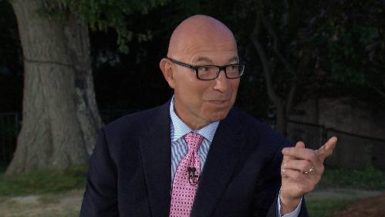As I packed up my gear to leave Oakmont after the 2007 U.S. Open, Rand Jerris of the U.S.G.A. called me over. To my delight, he presented me with a copy of his book Golf’s Golden Age, a survey of the great players of Bobby Jones’ era. I’m still touched by his thinking of me. Besides it being a good example of the adage I live by – if good people like you’re work, you must be doing something right – the book has proven to be an invaluable resource for information on players, courses and tournaments from many generations ago.
Rand’s book succeeds on many levels. First and foremost, it’s a useful resource. It’s a thoughtful and thorough review of the great players of the age of Bobby Jones; the ’10s, ’20s and ’30s. Many of these characters carved out scintillating careers as golf course architects as well as successful touring pros. Sure, Rand has chapters on well-known figures such as Chick Evans, Walter Hagan, the curmudgeonly Charles Blair Macdonald, Francis Ouimet (who’s more holy than Francis of Assisi in some circles), Tommy Armour and Gene Sarazen.
Happily, Rand also introduces us to other local, colorful and noble figures such as Craig Wood, the greatest player to come out of Lake Placid, Oregon’s Dr. O.F. Willing, who partnered with Bobby Jones during the Walker Cup at St. George’s, Kansas City’s Charlie Seaver, who many believed might have beaten Jones at Merion in 1930 in the final had he not blown a 5-up lead to Eugene Homans in the semi-final and Olin Dutra who won two majors, one while fending off Gene Sarazen and Bobby Cruikshank.
More importantly, Rand writes with an original, passionate, observant and soothing voice. The book reads as well out loud as it does in silence. Rand immerses the reader in the details of the story and the human feelings of the protagonists. Little gems from hallowed antiquity abound throughout the book. I was staggered most of all by the photo replica of the scorecard from Bobby Jones’ final match of the 1930 U.S. Amateur when he completed the Grand Slam. Both players took inglorious double bogey sixes on the par-4 tenth hole. Jones circled the scores on the historic card and glibly wrote “Ha Ha.”
Other relics of history and ghosts of tournaments past echo from the pages of Rand’s work. The spectator tickets from the 1930 U.S. Open at Interlachen really don’t look all that different from the badges worn by the patrons at Oakmont this year. Walter Travis holds his finish in his portrait while a cigar dangles from his mouth and his porkpie hat sits jauntily on his head. Ted Ray goes Travis one better, holding a finish more reminiscent of a linebacker getting ready to tackle a runner while a pipe dangles from the corner of his lips.
Rand gives a long overdue curtain call to the men who laid the foundation for the PGA TOUR. Charles Ross “Sandy” Somerville’s 1932 U.S. Amateur victory at Baltimore’s fabled Five Farms course was actually predicted by Bobby Jones who won $180 betting on Somerville. Charles Blair Macdonald blusters his way into spurring the creation of the Amateur Golf Association of the United States, the precursor to the U.S.G.A. Of course, Bobby Jones’ contribution to golf and his Grand Slam are lovingly examined.
The great success of Golf’s Golden Age is that it is written in the same style as Rand lives his life; with grace, erudition and sincerity. The book is invaluable as a reference, but also has timeless stories from ages past. The book is like a warm blanket on a cold New England day, comforting, illuminating and inspiring. It will appeal to casual fans and lifelong golf addicts alike.
In a time when we are hyper critical of not just the U.S.G.A., but all the powerful people in the sports industries, including golf, it’s nice to see that many of those in charge of the game’s venerable history and virtues are fulfilling their duty with the same virtues that drew us to the game in the first place – respect for the past, dignity in the present and concern for the future. Slante, Rand, and thank you.





Leave a reply
You must be logged in to post a comment.